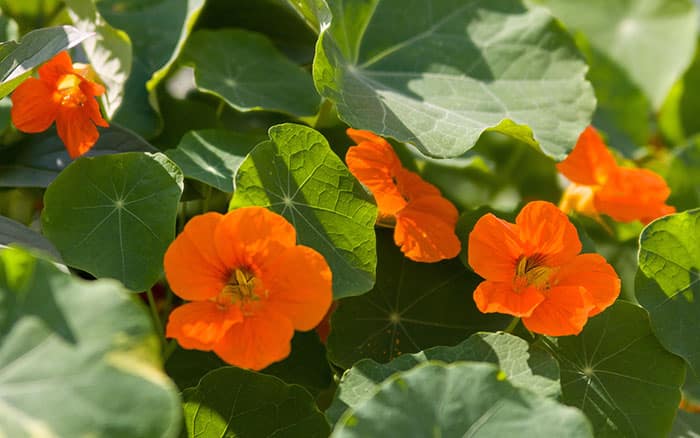When the warm weather beckons us into the garden, there’s nothing better than having a refreshing salad to get some nutrition into your body. In fact, there is something better…and that’s growing your own.
Salads don’t need to merely be green leaves in a bowl, but you can spruce them up by adding loads of colour, texture, and taste. So here are a few ideas to spice up your salad and create a delicious dish:
Edible flowers
Nasturtium are easy to grow and are known for their fiery orange, red or yellow flowers and their strong peppery taste. The flowers, buds and young leaves are edible, popular on dishes because they add some vibrant colour, but surprisingly, they are also high in vitamins A, C and D.
For the best flavour in salads, harvest the flowers and buds in the cool morning when flowers have just opened because if the plant is more heat-stressed it will result in more pungent tastes.

They grow quickly from seed in full sun in an exposed or sheltered spot in well-drained soil.
Pansies are a hugely popular edible flower; their colours add brightness to your plate as well as your garden plot. You don’t even have to stop at the petals, simply snip at the stem and you can eat everything from the stamen and sepals as well. When eaten raw in a salad, pansies have a fresh, lettuce-like flavour.
Chuck in some cheese

Add a little bit of feta and olives to your dish and make it into a classic Greek style salad, accompany with a wholemeal pitta and you’ve got a tasty tea with plenty of protein with a side of fibre.
Blue cheese is a popular addition to salads, either in a blue cheese dressing or simply crumbled on top of the colourful dish to add a salty, sharp topping.
You can’t go wrong with classic cheddar, either crated or cut into chunks can turn your salad into a filling meal.
Vibrant vegetables
Colourful salads are so much more appealing than a dish designed with just green veg. Top your rocket or Romaine with beetroot, radishes, or red cabbage.
Beetroot grows in any well-drained garden soil and if grown in succession and with varieties for winter storage, you can have beetroot all year round.

From April to July seeds should be sown and when the seedlings are 2.5cm tall, thin them until there’s one seedling left per station. Harvest by pulling up alternate plants once they’re the size of a golf ball, leaving the remainder to mature, then harvest when they are cricket ball sized.
Radishes can be grown in a garden of every size, ready to harvest in only 4 weeks and add to your salad for a little spicy kick. Sown thinly little and often between February and August, keeping the soil moist to ensure rapid growth. Harvest when young to ensure the radishes remain succulent, otherwise they will become woody and inedible.


Leave A Comment